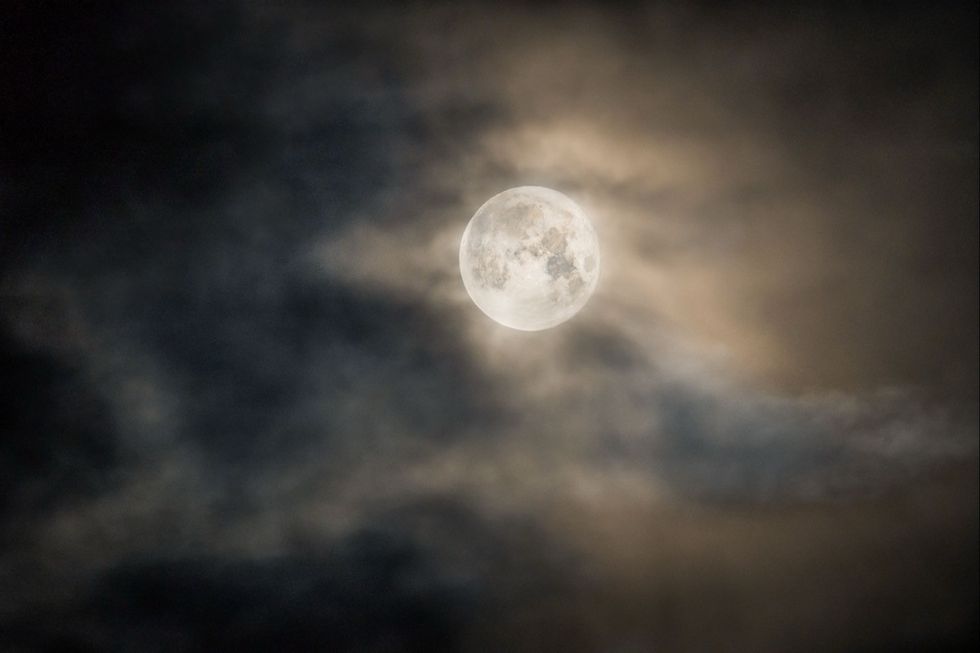When you turn your eyes skyward in the evening, you expect to see the moon and perhaps a nice view of the stars. What you may not expect, however, is twomoons lighting up the sky. But according to scientists, for a short period of time, we’ll be getting a new “mini-moon.”
RELATED: 8 Amazing Things You Can See in the Night Sky Without a Telescope.
According to study findings published this month in the Research Notes of the American Astronomical Society (RNAAS), a small asteroid is set to be entrapped by Earth’s orbit. Formally known as 2024 PT5, scientists predict it will be here for the next two months. It’s called a “mini-moon” event, which occurs when an asteroid or another form of space matter becomes ensnared in our planet’s orbit.
Short visits from a “Near-Earth object” (NEO)—like the upcoming visit from 2024 PT5—happen somewhat often, while longer mini-moon events are rare and only occur every 10 to 20 years, Space.com reported. Another NEO called 2022 NX1 was a “short-lived mini-moon” in both 1981 and 2022, researchers noted in the study.
The latest space rock to make the rounds will make a horseshoe-shaped orbit of Earth, becoming a mini-moon from Sept. 29 and ending on Nov. 25. At that point, it will exit Earth’s gravity and return to its asteroid belt, which is “trailing our planet and orbiting the sun,” Space.com reported. According to Space.com, these objects end up ejected from our orbit due to “gravitational disturbances caused by the sun.”
RELATED: The Most Recent Total Solar Eclipse Will Be the Last Until 2044, NASA Says.
“The object that is going to pay us a visit belongs to the Arjuna asteroid belt, a secondary asteroid belt made of space rocks that follow orbits very similar to that of Earth at an average distance to the sun of about 93 million miles (150 million kilometers),” lead author and Universidad Complutense de Madrid professor Carlos de la Fuente Marcos told Space.com. “Objects in the Arjuna asteroid belt are part of the near-Earth object population of asteroids and comets.”
When it comes to viewing this space event, things get a bit more complicated. Technically, catching a glimpse of the mini-moon is possible, but it’s more difficult for average stargazers.
“The object is too small and dim for typical amateur telescopes and binoculars. However, the object is well within the brightness range of typical telescopes used by professional astronomers,” Marcos told Space.com.
To see the mini-moon, you’ll need a telescope that has a minimum of 30 inches in diameter and is also equipped with some more advanced sensors (either a complementary metal-oxide-semiconductor (CMOS) or a charge-coupled device (CCD) sensor).
“A [30-inch] telescope and a human eye behind it will not be enough,” Marcos told Space.com.

